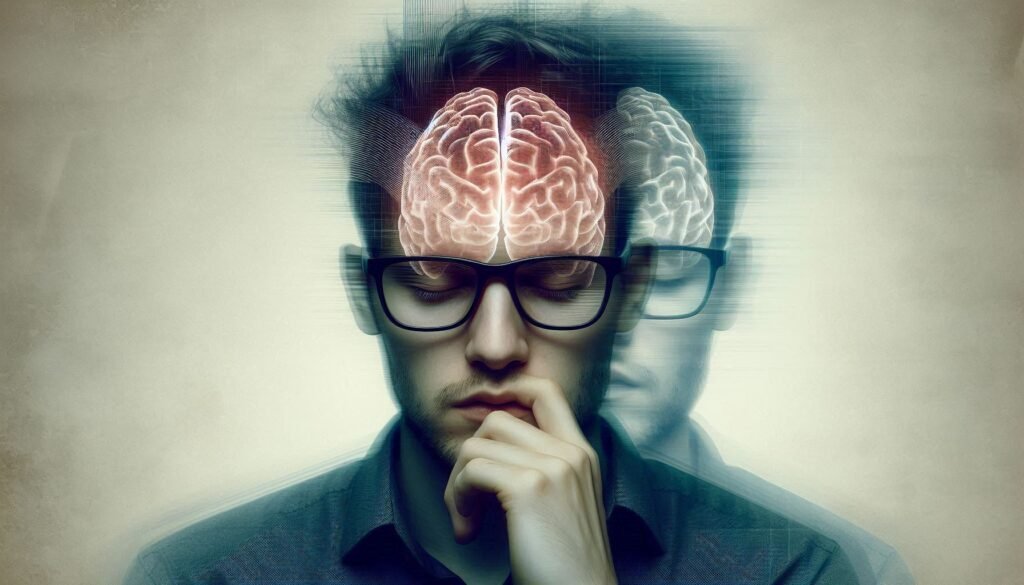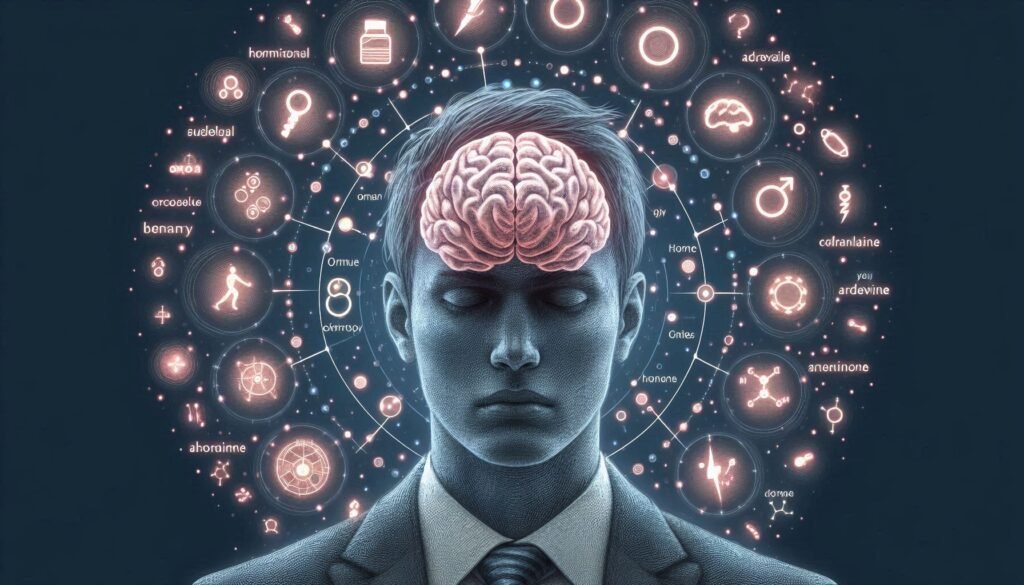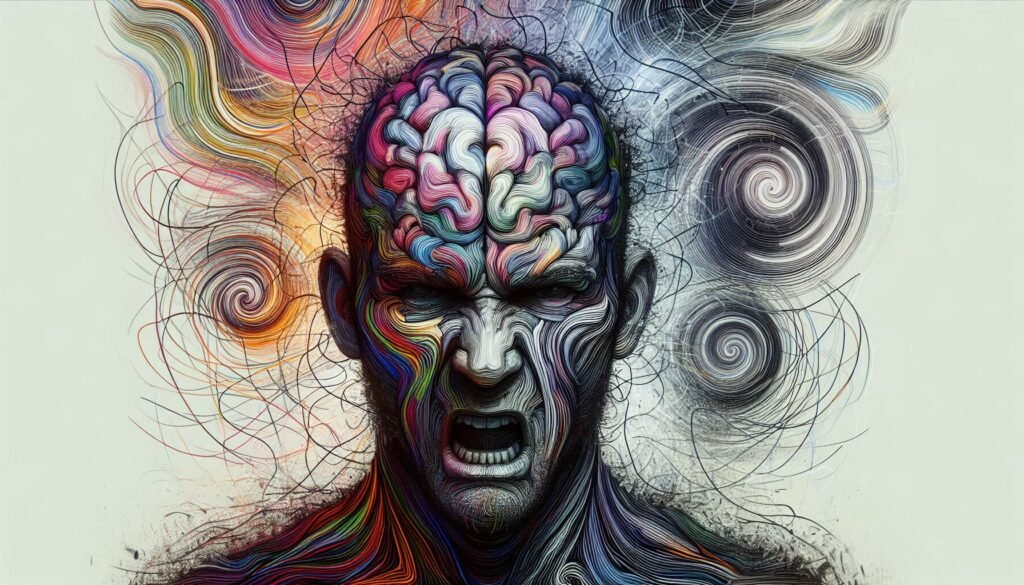Head injuries can shake our world in ways we often don’t expect. While the immediate effects might be physical, many individuals experience a range of vision problems following head injury that can disrupt daily life. These issues often go unnoticed or are misunderstood, leaving recovery incomplete and frustrating.
The visual system is intricately connected to brain function, making it particularly vulnerable after a concussion. From blurred vision to light sensitivity, understanding these complications is crucial for effective treatment. By recognizing the signs early on and exploring various diagnostic and rehabilitation options, individuals can regain their quality of life.
In this article, we will unfold the common visual disturbances that may arise after a concussive event. We’ll delve into how specific dysfunctions affect eye movements and overall perception while providing insights into available therapies designed to aid recovery from these debilitating symptoms. Whether you’re navigating your own journey post-injury or supporting someone who has been affected, there’s valuable information ahead that could pave the way toward healing.

Understanding the Visual System’s Vulnerability to Concussion
The visual system is a complex network that relies heavily on the brain’s processing capabilities. When a concussion occurs, this delicate balance can be disrupted. The brain’s ability to interpret visual information may falter, leading to various complications.
Concussions often result in a temporary or permanent impairment of eye function. This vulnerability stems from the fact that many areas of the brain are involved in vision—ranging from those controlling eye movement to regions responsible for interpreting what we see. Any disturbance in these pathways can lead to significant challenges.
Moreover, the impact of head trauma extends beyond immediate physical symptoms. Many individuals experience subtle changes in their vision that might not surface until days or weeks after the injury. These delayed reactions complicate diagnosis and treatment.
As awareness grows about these issues, it becomes clear that proper assessment following head injuries is essential for recovery. Understanding how concussions affect our visual system empowers both patients and healthcare providers to take informed steps toward rehabilitation.
Common Visual Disturbances After Concussive Injuries
After a concussion, individuals often experience various visual disturbances that can significantly impact their daily lives. These problems vary in severity and may manifest shortly after the injury or develop over time. Common symptoms include blurred vision, double vision, and difficulty focusing on objects.
Another frequent issue is light sensitivity, which can make bright environments uncomfortable or even painful. This photophobia can lead to avoidance of certain situations, further isolating those affected. People may find themselves squinting or needing to wear sunglasses indoors.
Additionally, some patients report experiencing difficulties with depth perception and peripheral awareness. This can affect not only reading but also activities such as driving or sports participation. Such challenges arise from disruptions in the brain’s ability to process visual information effectively.
These visual disturbances are often overlooked during initial assessments following a head injury but play a crucial role in recovery and quality of life for those affected by concussions.
Oculomotor Dysfunction: Eye Movement Problems Post-Concussion
Oculomotor dysfunction is a common issue following a concussion. It refers to difficulties with eye movements that can significantly affect daily life. Individuals may experience problems with tracking objects, focusing on near or distant targets, and coordinating both eyes effectively.
These challenges arise because the brain’s control over eye muscles can become disrupted after head trauma. This disconnection often leads to symptoms like double vision or blurred sight. Simple tasks, such as reading or watching TV, can become frustratingly difficult.
Moreover, oculomotor dysfunction may cause visual fatigue and strain during activities requiring sustained focus. Patients might feel discomfort after short periods of reading or using screens, which adds to their distress.
Addressing these issues early is crucial for recovery. A comprehensive assessment by an eye care professional specializing in post-concussion symptoms can identify specific deficits and guide effective treatment options tailored to individual needs.
Convergence Insufficiency and Its Impact on Daily Activities
Convergence insufficiency is a common visual problem that can arise after a head injury. This condition makes it difficult for the eyes to work together when focusing on nearby objects. As a result, individuals may experience significant discomfort during tasks that require close vision, such as reading or using a computer.
People with convergence insufficiency often report symptoms like double vision, blurred images, and eye strain. These issues can lead to frustration and affect daily activities significantly. Tasks that were once routine may become challenging and exhausting.
Children in particular may struggle with schoolwork due to this condition. Difficulties concentrating or maintaining focus can hinder academic performance and overall learning experiences. Adults might find themselves avoiding certain activities altogether.
The impact of convergence insufficiency extends beyond visual discomfort; it affects quality of life. Simple tasks like grocery shopping or enjoying hobbies may become overwhelming challenges rather than enjoyable experiences.
Light Sensitivity and Photophobia Following Head Trauma
Light sensitivity, or photophobia, is a common issue that can arise after a head injury. Individuals may experience discomfort or pain when exposed to bright lights, making everyday activities challenging. This condition often stems from the brain’s altered processing of visual stimuli following trauma.
After experiencing a concussion, many find themselves squinting in daylight or feeling overwhelmed in environments with fluorescent lighting. These symptoms can hinder social interactions and contribute to feelings of isolation. Even normal indoor lighting can become intolerable for some individuals recovering from head injuries.
The underlying mechanisms involve changes in how the brain interprets light information due to inflammation and other neurological effects triggered by the injury. As these pathways are disrupted, patients may feel an exaggerated response to light.
Management strategies include wearing tinted glasses or using shades indoors to reduce exposure. Awareness of this symptom is vital for those on their recovery journey, as it plays a significant role in daily comfort and quality of life post-injury.
Visual Processing Deficits: How Concussions Affect Visual Perception
Visual processing deficits are common after a concussion. The brain’s ability to interpret visual information can be impaired due to trauma. This disruption affects how individuals perceive and respond to their surroundings.
People may struggle with depth perception, contrast sensitivity, or speed of processing visual stimuli. Tasks that involve tracking moving objects can become challenging. These issues often lead to frustration in daily activities.
Additionally, spatial awareness may also decline following a head injury. This can impact balance and coordination as the brain struggles to integrate visual cues accurately. Daily tasks like driving or reading might feel overwhelming.
Individuals experiencing these deficits should seek professional assessment and support. Addressing these symptoms early is crucial for restoring effective visual function post-concussion.
Diagnostic Procedures for Identifying Post-Concussion Vision Problems
Identifying vision problems following a head injury requires comprehensive assessment techniques. Eye care professionals often begin with a detailed patient history that includes the specifics of the concussion and its symptoms. This information helps to narrow down potential visual disturbances linked to the injury.
Next, a standard eye examination is conducted. This typically evaluates visual acuity, pupil response, and basic eye movements. These initial assessments can reveal obvious issues but may not capture more subtle dysfunctions related to concussions.
Specialized tests are essential for thorough evaluation. These might include assessing oculomotor function, which examines how well the eyes move and work together. Additional evaluations such as convergence testing will determine if there are challenges in focusing on nearby objects.
Visual processing tests also play a critical role in diagnosis. They assess how effectively an individual interprets what they see after sustaining trauma. Each of these diagnostic procedures provides vital insights into post-concussion vision problems that require targeted intervention.
Neuro-Optometric Rehabilitation Techniques
Neuro-optometric rehabilitation is a specialized approach designed to address vision problems following head injury. It combines elements of optometry and neurology to promote healing and recovery. The techniques focus on enhancing visual performance by targeting specific deficits that may have arisen due to trauma.
One key aspect of this therapy involves individualized assessment. Practitioners evaluate the patient’s visual system, identifying areas affected by their concussion. This allows for tailored interventions that meet each person’s unique needs.
Treatment often includes exercises aimed at improving eye coordination, focusing skills, and processing speed. These exercises help retrain the brain’s connection with the visual system, fostering greater efficiency in visual tasks.
Additionally, neuro-optometric rehabilitation can integrate sensory integration strategies. By working on how various sensory inputs interact, patients can improve their overall spatial awareness and reduce symptoms like dizziness or imbalance stemming from their injuries.
Vision Therapy Exercises for Concussion Recovery
Vision therapy exercises play a crucial role in the recovery process for those experiencing vision problems following head injury. These tailored exercises help improve visual skills, enhance coordination, and address specific deficits caused by concussions. A personalized program can target issues like eye tracking, focusing, and depth perception.
One common exercise involves pencil push-ups, where patients focus on a small object as it moves closer to their nose. This helps strengthen convergence abilities essential for reading and daily tasks. Another effective method is saccadic training, which enhances rapid eye movements critical for scanning environments.
In addition to these physical exercises, relaxation techniques are also beneficial. Incorporating activities like deep breathing while practicing visual tasks can reduce stress associated with vision challenges after an injury.
Regularly engaging in these targeted therapies promotes neuroplasticity—the brain’s ability to adapt—allowing individuals to regain functional vision more efficiently during recovery from concussion-related disturbances.
Adaptive Strategies and Accommodations for Persistent Visual Issues
For individuals experiencing vision problems following head injury, adaptive strategies can significantly enhance daily living. Simple adjustments at home or work often make a world of difference. For instance, using brighter lighting and reducing glare through window treatments can alleviate discomfort from light sensitivity.
Creating an organized environment is essential. Keeping frequently used items within easy reach minimizes the need for excessive eye movement. Additionally, utilizing large print materials or digital screens with adjustable text sizes can help those struggling with visual processing deficits.
Incorporating regular breaks during visually demanding tasks allows time for eyes to rest and recover. This practice not only reduces strain but also helps in managing fatigue that comes after head trauma.
Support systems play a vital role as well; communicating needs to friends, family, or colleagues fosters understanding and cooperation. By employing these strategies and seeking professional guidance when necessary, individuals dealing with persistent visual issues can navigate their recovery journey more effectively while maintaining quality of life.


